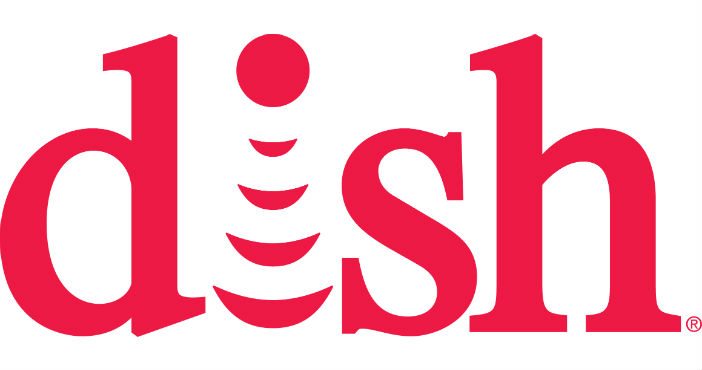If you’re thinking about purchasing a smart speaker, you might be going back and forth about which one to buy. We hear you. With all the news and info you hear about the two most popular voice assistants, Alexa and Google Assistant, it’s hard to know which one to pick. Google’s Home speaker has been out since 2016 and despite it not being available on Google’s web site anymore, it serves both as an intelligent virtual assistant and a great music player. Its biggest rival is the Amazon Echo, which is now in its third generation. Knowing how they’re similar and how they are different can help you make a well-informed purchase. Which smart speaker is right for you? Here’s a breakdown of cost, what the two voice assistants can do, what they look like, and their compatibility with smart home devices.
Appearance
Google Home
The original Google Home is shaped like a cylinder, and it looks a little bit like a dehumidifier. It sits 5.6-inches tall, and it’s 3.79 inches in diameter. It has a white top and a slate-gray fabric bottom.
You can get special bases for the speaker that changes the gray to a more appealing color for $20. These bases are available in carbon, pink, or copper metal.
Additionally, you can get the Google Home Max, Hub, or Google Home Mini. The Google Home Max and the Home Mini are larger and smaller, respectively than the original Google Home model. The Google Home Max is more expensive and is built for sound, while the Google Home Mini is a miniature, cheaper version of the original Google Home.
Google rebranded the Google Home Hub as the Nest Hub. The Nest Hub has a 7-inch touchscreen display. The screen allows you to do things like watch videos, view photos, control your smart home via touchscreen, and view who’s at your door when you have a video doorbell that works with the Hub — like the Nest Hello.
Google also released the Nest Hub Max. It functions exactly like its sibling but offers a few more features that make it the ultimate smart display — a larger 10-inch display for better media consumption, richer sound performance, and a built-in camera that allows for two-way video calls and peace of mind home security.
The newest addition to the Google speaker family is the Google Nest Mini (second generation). It is faster than the first generation, inexpensive, made from recycled materials, and it adjusts sound based on background noise. It also comes in four different color choices: chalk, charcoal, coral, and sky.
Buy one now from:
Amazon Echo

The original Echo is now in its third generation. Similar to its predecessors, it has a cylindrical shape, and you can order the Amazon Echo in one of four colors — heather gray, sandstone, charcoal, and twilight blue.
In addition to the regular Echo, you can buy several other types of Echo devices, depending on your needs. The Echo Dot is a mini version of the Echo. On its third generation, it does just about everything the original Echo does, but the Dot is smaller and cheaper, so it’s a lower-tier version in terms of its tech specs. There’s also the Echo Input, which isn’t a standalone Echo speaker, but it can turn an old speaker in your home into an Alexa-enabled speaker.
The Echo Show is on its second generation, but a more affordable version called the Echo Show 5 came out in the summer of 2019 — as well as the Echo Show 8 that was introduced in September 2019. The Echo Spot is a smaller, alarm clock-style device with a screen. The Show is good for a kitchen (looking at recipe videos), while the Spot is great as a bedroom alarm clock or for a living area. The Echo Show and Echo Spot also lets you see who’s at the door if you have a video doorbell, make video calls, and more.
One major difference between the Echo Show and the Google Nest Hub Max is that the Nest Hub Max also doubles as a handy Nest security camera, offering peace of mind by integrating many Nest Cam features for security.
Google Home responds to touch, and it has LED lights that activate while in use. Conversely, instead of having lights along the top, the Echo has a light ring around the circumference. Both of these smart speakers have cylindrical shapes, but the Amazon Echo is a bit more streamlined than the Google Home. The Amazon Echo’s top is flat, while the Google Home has a slight slant.
Buy one now from:
Cost

The Amazon Echo (3rd Gen) will set you back somewhere around the ballpark of $60 to $80 ($100 retail price). Meanwhile, the Google Home costs $100 wherever it’s sold. You can often find both on sale for even cheaper, especially around holidays and company sales events.
Buy one now from:
Voice assistant

Echo
Alexa is the virtual assistant associated with the Amazon Echo. You can change the voice to different accents or languages. Additionally, you can ask Alexa to control your connected smart devices, ask for the weather for the weekend, set timers, play games, set reminders, set a dinner bell, and so much more. Amazon is continuing to add new features to Alexa regularly. Over the past year, Amazon has released new features like Alexa Guard and Whisper Mode.
Google Home
As for the Google Home, its virtual assistant is, well, the Google Assistant — leaving no doubts about its purpose for users. One interesting thing about the Google Assistant is that you can change the voice to male, as well as pick a different language. Google Assistant is multilingual, meaning that you can speak more than one language in the home and it will understand. You can even use interpreter mode and have Google Assistant act as a real-time translator. Plus, Google consistently adds more features to Google Assistant.
Buy one now from:
Skills

Echo
Amazon announced the Skill Blueprints portal as an option for people to build their own skills. So, not only can you add professional skills to your Alexa device, but you can also create and publish skills to the Alexa Skills Store.
It’s worth keeping in mind, too, that both the Amazon Echo and Google Home allow setting up routines comprised of multiple actions triggered by a single command or condition. For example, you can make your smart lights turn on and hear a news broadcast at the same time each day to wake you up.
Want to make phone calls with your smart speaker? That’s possible on both devices, but the Echo Show and Spot are better for video calling since the Google Home Hub lacks a camera, and the Nest Hub Max has a higher entry price.
Want to ask Alexa multiple questions? She lets users ask questions one after another as long as they’re within about five seconds of each other. But, they have to ask one question, wait for an answer, and so on.
Google Home
The Google Home has many features as well, with new ones coming out every day. You don’t have to add skills to Google Assistant in the same manner as you do with Alexa though.
Google Home is also capable of a “multiple actions” feature that allows people to ask more than one question at once. For example, you could say, “OK, Google, what time is it, and what’s the weather forecast?” Alexa doesn’t have this capability.
One interesting technology that’s been slowly coming to the Google Assistant is Google Duplex, which can make calls on your behalf. Google has already shown off the technology and posted audio clips on its blog to highlight the authenticity of the capability, and the technology is available on phones.
A study that investigated how the Google Home and Amazon Echo do while answering questions found that the Google Assistant answered more correctly and made more attempts to respond to questions than Alexa. So, for now, the Amazon Echo offers more functionality overall. But, if it’s specific capabilities you want, Google Home is a wise choice.
Buy one now from:
Smart home device compatibility

When trying to compare these two leading smart speakers, you might wonder whether you can use the gadgets to control your smart thermostat or intelligent light bulbs, for example. These days, many smart home devices are compatible with both Alexa and Google Assistant, although if you’re unsure you can click on the links below to see if the gadget in question is on the list of compatible devices.
Echo
Alexa works with more than 100,000 smart home products. Here’s our list of some of the best compatible devices.
Google Home
Google Home supports more than 30,000 products, which make its compatibility level seem substantially less. It’s worth noting, though, that in January 2018, the Google Assistant was only compatible with 1,500 devices. That jump indicates smart home compatibility is an area of focus and desired growth for Google. Here’s our list of some of the best compatible devices.
Buy one now from:
What’s the verdict?

Buying a smart speaker and choosing the best one for you isn’t always straightforward, and each of these speakers has its merits. At the moment, it seems as though the Amazon Echo continues to be the better option. It is compatible with more smart home devices. Plus, there are more types of Echo devices to choose from.
We will say that the Google Home and the voice assistant inside does seem smarter than Alexa. We’ll continue to update this post as more features and capabilities for both devices are announced. For now, Echo is still leading the way, especially for audiophiles that crave superior audio.
Buy one now from:
Editors’ Recommendations













